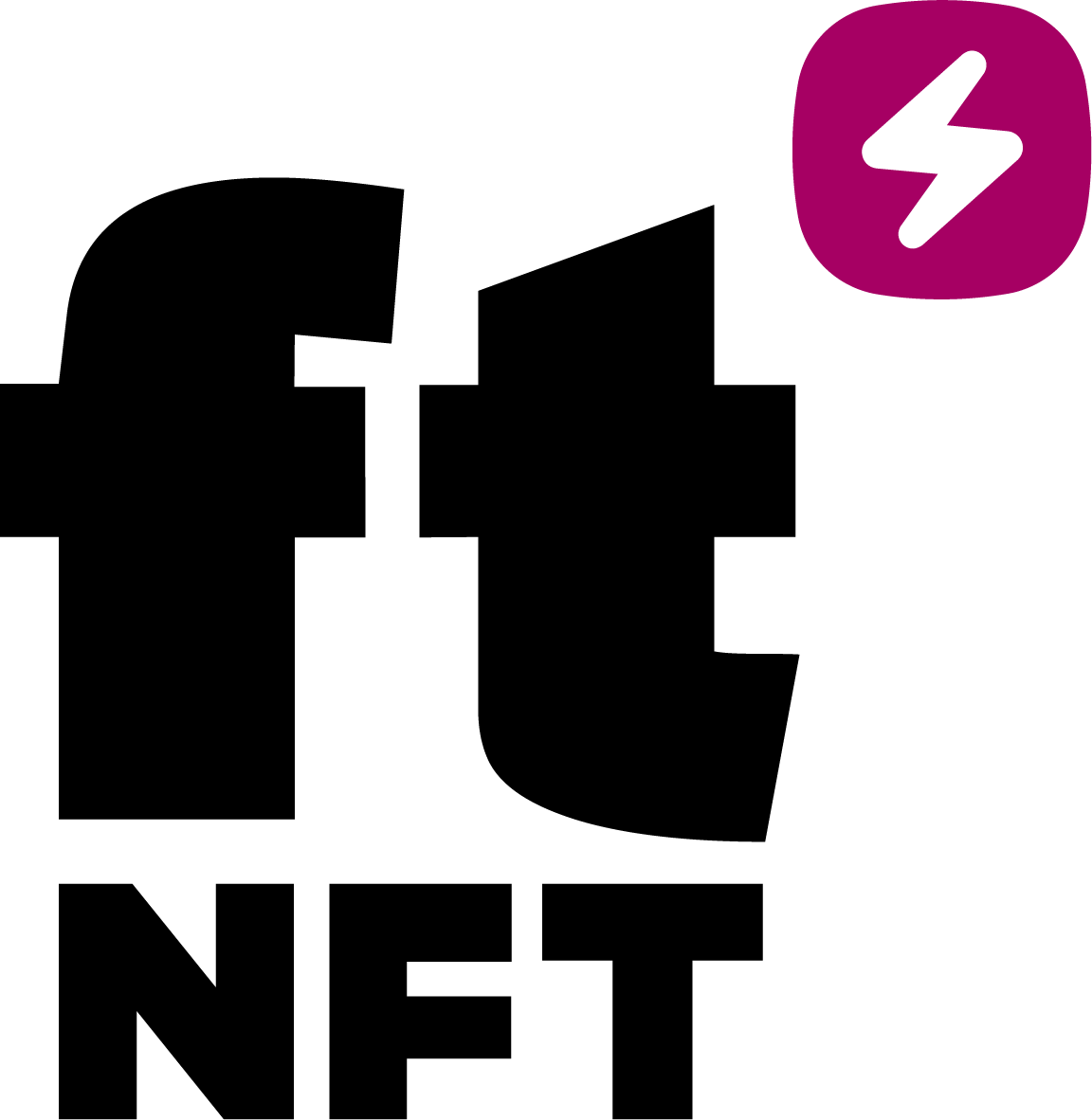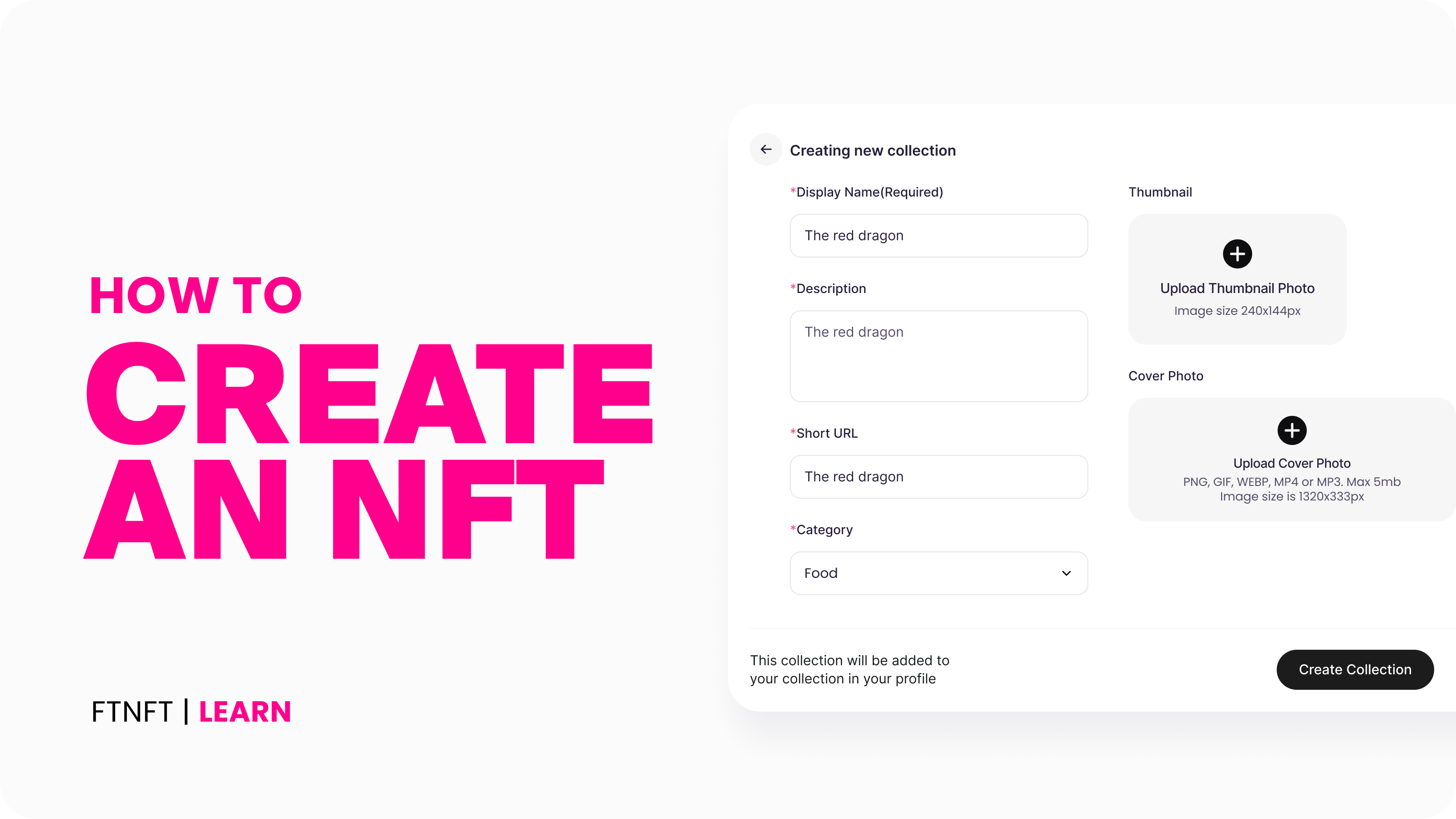The fact that NFTs are going mainstream with every viral collection and emerging Web3 trend is no longer surprising. While growing in popularity, the assets leave almost no industry untouched. If you still don't know what the abbreviation stands for or how to make an NFT, we've got some catching up to do.
While there's definitely more to it, in a nutshell, you can map your NFT journey with platforms such as ftNFT by minting and uploading your future asset on a blockchain. However, if you're thinking of making your first NFT, you'll need a more detailed preview.
Table of Contents:
What Is an NFT?
If we cut all the fluff out of the definition, NFTs (non-fungible tokens) are blockchain-based unique digital assets you can buy, sell and trade. What makes them extremely valuable and unique is that they can’t be replicated and, most importantly, exchanged for each other equally, unlike cryptocurrencies. Each comes with metadata that makes the asset verifiable, excluding duplication or manipulation.
There are different ways to create NFTs, but some basic steps are common for every case.
Why Are NFTs so Popular?
NFTs are definitely the talk of the town whenever a topic on the digital economy comes up. Although they have caused a lot of controversies, there certainly are some museum pieces raved about all around Discord and Twitter.
Top among the reasons are that they represent proof of ownership, they are unique, verifiable and scarce. These make NFTs attractive and valuable for those seeking new investment opportunities. Thanks to emerging NFT platforms, now they're also accessible. It’s no longer for just the smartest kid on the block, with a bit of guidance, everyone can create their own NFT.
Before getting there, however, there are a few concepts to understand.
A quick preview of the terms to know:
Blockchain
Blockchain is a public ledger storing data, making it challenging or impossible to update, hack, or defraud the system. It’s a digital record of transactions replicated and distributed throughout the systems.
Crypto Wallets
A cryptocurrency wallet is a device or program enabling you to send, receive and store Cryptocurrency. The critical aspect of crypto wallets is how private the key is stored there. These wallets come in various types, such as digital, hardware, and software wallets.
NFT Marketplaces
NFT Marketplaces are the platforms for storing, browsing, selling and buying NFTs. Simply put, this is where you create/upload and list your NFT for sale.
There are many marketplaces out there that bring NFT enthusiasts together to one place. OpenSea, Binance, ftNFT, and more are some good examples.
OpenSea is the largest NFT marketplace, with more than 1 million registered users and more than 120 million people visiting the page monthly.
Binance is a crypto exchange that is the biggest in the world in terms of daily crypto trading volume. The platform launched its NFT marketplace in 2021.
ftNFT is another NFT Marketplace launched in 2022. Unlike the mentioned marketplaces, ftNFT is a Raffle-based, RNG-regulated marketplace. This means that it enables the users to buy NFT, generate an entry to ftNFT Drop, and earn cash prizes. The marketplace has also opened the first phygital NFT shops in Dubai's luxury malls - Dubai Mall and Mall of the Emirates.
Minting
The process of creating an NFT token is referred to as minting. Minting an NFT requires using a blockchain to record and verify transactions. In other words, minting is when digital art is stored on a blockchain and becomes a digital asset.
Gas Fees
Gas fees are the transaction costs you pay on the blockchain network for their service. Gas fees provide Blockchain with the needed fuel to function.
Steps to Create an NFT
While the process of creation may vary from platform to platform, there are some things you should start with.
Understand What You Want to Create
Understanding what you want to create is the first and the most crucial step in your NFT-creation process. Bear in mind how valuable and unique your NFT is. You should understand that creating an NFT just for the sake of creation is not the best option and wouldn't benefit you.
Choose the Blockchain
If you have already figured out which type of NFT you want to create, the next step would be to choose the Blockchain. Many blockchains in the market have their own NFT ecosystem, including Ethereum, Solana, Ripple, Cardano, and more.
Each of these blockchains has its advantages, rewards, etc. However, the NFT platform you would later choose might not support your chosen Blockchain in its platform, so you need to look at that aspect as well.
Set up a Crypto Wallet
Once you've decided which Blockchain to use, you'll need a digital wallet supporting the chosen Blockchain. There are several famous crypto wallets, including MetaMask, Coinbase, Trust Wallet, etc.
You can streamline the processes by choosing a holistic ecosystem that offers everything in one place, such as Fastex, which offers its own crypto exchange, wallet, token, and Blockchain.
Choose the Platform
After understanding what you want to create and choosing the Blockchain, the next step is to select the NFT marketplace.
Almost all NFT marketplaces enable you to create your own NFT. However, when choosing the right platform, do some research, as some platforms can only host a specific type of NFT.
When choosing the NFT platform, make sure to look at the following features:
Security
Pick an NFT marketplace with comprehensive security measures to protect you from fraudulent operations. Two-factor authentication (2FA) and strong encryption are required.
User-Friendliness
The platform shouldn’t be confusing or hard to navigate. Especially if you’re a newb, complex processes may hinder your NFT creation. Choose a platform that supports new NFT creators making the process more streamlined for them. Additionally, make sure the marketplace provides 24/7 support and has all the resources to help you learn about NFTs.
Gas Fees and Commission Fees
Every transaction on the Blockchain process requires gas fees and commission fees. When choosing the platform, it’s best to learn about supported Blockchain, gas fees, commissions or whether they have additional service fees.
Lazy Minting Option
Besides minting, some marketplaces offer the lazy minting option, which is a more flexible and cost-effective opportunity for new creators. Lazy minting provides the chance to upload the NFT without paying the gas fee upfront. Instead, once the asset is sold, the end user has to pay the gas fee himself.
How to Become an NFT Artist on ftNFT?
Creating an NFT is somewhat simple once you've decided on a platform. As in this space practice makes perfect, go ahead and learn how to become an NFT artist on ftNFT.
If you are already logged into your account, here’s a quick path that will bring you to your first NFT:
- Click on your “Profile Icon” in the right upper corner of your screen
- Choose “My NFTs” from the drop-down menu
- On the left side of your screen choose “Created”
- Almost there: click “Create Collection”
- Upload all required files and fill in the info in the drop-down sidebar menu on the right
- Choose “Create Collection”
FAQ
How much does it cost to create an NFT?
The fees you are required to pay during the process vary depending on the marketplace, listing fee, blockchain, gas fees, etc.
Can I create an NFT for free?
It is possible to create an NFT for free if you choose the option of Lazy Minting. Platforms like ftNFT offer this option letting you create your NFT and put it for sale without being written to the blockchain, thus making the process free at this stage.
NFTs are still emerging and evolving assets. Any insights provided in the above material should not be perceived as investment or financial advice. Do your in-depth research to make informed decisions on performing any action with NFTs.







